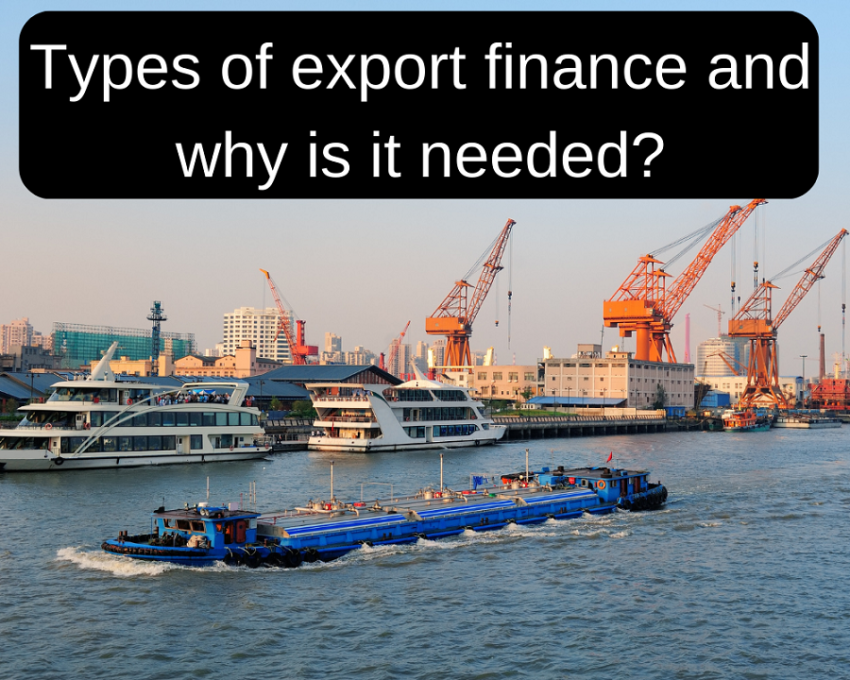Export finance is a type of finance whose primary objective is to financially assist enterprises that engage in foreign trade. As the name suggests, this type of finance is completely for the country’s exports. It is a process that helps to fund the exporters to promote their business on the international markets.
Export finance can be defined as a cash flow solution when it comes to exporters requiring funds for manufacturing the products or transporting the goods, and many other export needs. To meet their export needs, exporters may use a wide range of export finances. Banking and Tech Innovations are streamlining export financing processes with automation and secure platforms like blockchain. There are various types of export finances available and exporters can choose any of them according to their needs and preferences.
Types of export finances
Exporters in this era get to enjoy a wide range of export finances. But, if you are new to the export industry, then you must, first of all, analyze why you need the funds and then opt for export finance.
Export finances are usually required for starting a new export business, expanding the business in international markets, and increasing working capital. Depending on your reason, you can select any of the export finance mentioned below.
Pre-Shipment Finance
Pre-shipment finance is a type of export finance that is given to exporters when they are in need of raw materials to produce the final products. In simple words, we can describe it as the finance provided for the shipping of goods. Here, the sellers or exporters receive the payment before shipping the products to buyers.
Packing credit is an important term in this type of export finance. Export business owners can enjoy pre-shipment finance against the export orders that are received from the importers in the packing credit form. The packing credit gets managed as soon as they collect funds from international buyers. Improve your procurement process by understanding the different types of export finance available to mitigate risk and optimize cash flow. This type of finance is offered for a period of 180-270 days.
Post-Shipment Finance
Post-shipment export finance is the payment that is received by the exporters once the products are shipped and reach the buyers. This export finance is granted to the sellers only when importers issue an invoice report for payment. Post-shipment finance is delivered to the exporter only after 3 to 6 months of shipping the goods. However, this monthly gap badly impacts the export industries. An exporter usually solves this issue by presenting the shipping bill to various financial institutions such as banks, commercial money lenders, etc seeking financial aid for the continuation of exports.
This type of export finance is usually used to pay the wages of workers and other service charges. It is also used for making payments to promote the export business in various international markets. The rate of interest on post-shipment export finance starts from a minimum of 90 days. However, it can also be extended depending on the individual financial institutions. Physician mortgage loans are a financial product completely unrelated to export finance, which helps businesses sell goods internationally.
Bill Discounting and Invoice Factoring
In this type of export finance, an exporter can submit their shipment invoice to any financial institution in order to receive faster liquidation.
A financial institution may use this invoice however they want. They can either purchase it, reduce it, or even just collect it.
It involves bill collection finance. This means when exporting to foreign countries, exporters can apply for a bank loan using these bills and get funds for exports. Here, a financial institution agrees to compensate almost 80% of the default money if there is any default case. This is also a type of post-shipment export finance.
Export finance against allowances and subsidies
This is provided by our Indian government to exporters. The government offers subsidies to exporters in situations where there is an unexpected rise in expenditure due to various changes happening both nationally and internationally. Here, the government offers allowances or subsidies for exporting goods at lower prices to foreign importers.
There are also various allowances provided by our Indian government for increasing Indian exports on a global level.
Deferred Export Finance
There are also export finances available for importers to promote more imports of Indian goods. It is also known as lease finances. This helps the importers to buy various valuable goods.
Deferred export finance is of two types. They are:
1. Suppliers Finance:
Here, in supplier finance, an exporter receives the finance bank to promote the selling of goods on an installment basis. In this type of export finance, the payment received by the exporter will be of full value and the installments made by the customer will be transferred to the exporter’s bank account.
2. Buyer’s exporting finance:
When it comes to this type of export finance, a customer is provided with credit under the line of credit by the exporter’s bank. This buyer’s exporting finance helps international customers to pay for the imports purchased from the exporter.
Conclusion
Finance is an important factor in any industry. As an exporter, you need to know how to get the correct export finances. An exporter has a lot of options to choose from, they just need to know all the things related to export finance. Our Indian government is giving all its efforts to promote Indian exports. There is also a wide range of schemes launched by the government to benefit our Indian exporters.
Author’s Bio:
Mr. Mehul Goyal is a professional DGFT Guru – Advance License with experience of more than 30 years and specialised in the field and is offering DGFT Consulting Services all over India. He is working with many importers and exporters even before DGFT was instigated in the markets.

